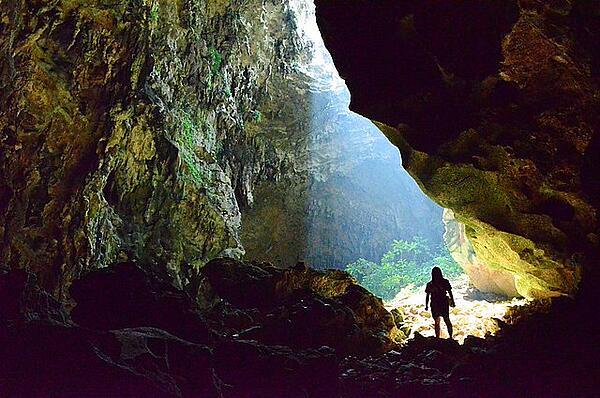Callao Man
In 2007, archaeologists unearthed human bones in the Philippines that proved early man had lived on the archipelago almost 70,000 years ago.
Before the discovery of the bone, scientists believed that humans had not occupied the Philippines before 47,000 years ago based on the discovery of the Tabon Man. However, the new findings predated this by 20,000 years, posing new questions about how humans came to arrive archipelago.

The discovery took place in the Callao Caves near Peneblanca (210 miles from Manila) where archaeologists from the University of the Philippines and the French National Museum of Natural History were taking part in a four-year excavation project in the extensive cave network. While digging in the area, they discovered a foot bone that turned out to be a metatarsal bone from the right foot.
After analysing the 2.4 inch bone using a method called uranium series dating, it was revealed that it was significantly older than Tabon Man - dated to 67,000 years ago - making it the oldest human remains ever found in the Philippines.
Professor Armand Mijares (from the University of the Philippines and joint leader of the project alongside Florent Detroit) stated that the evidence provided by the bone suggested the man from the cave - known as Callao Man - or his ancestors are likely to have reached the area by raft, despite the fact that experts didn’t think humans were capable of travelling so far by sea during this period. He said about the findings:
"So far this could be the earliest human fossil found in the Asia-Pacific region.”
"The presence of humans in Luzon shows these early humans already possessed knowledge of seacraft-making in this early period."
The discovery also revealed more about the lifestyle of the humans; according to the archaeologists, cut marks on the bones of deer and boar found around the human remains suggest that the Callao Man was an efficient hunter. However, nothing man-made was found during the dig so it cannot be confirmed that he had developed the skills to make hunting tools.
Additionally, professor Mijares revealed that the bone found shared some features of today’s Aetas, who are indigenous to the Philippines.
In light of the discovery, further excavations of the Callao Caves took place and in 2019 archaeologists unearthed the bones of a previously unknown ancient human species named Homo luzonensis.
While these bones are not related to those found in 2007, they do raise the question of whether a separate human species evolved on other islands in the region. Mijares, Detroit and their team are continuing to analyse the bones in hope of shedding light on their ancestry in the future, and perhaps answering the question of whether they can be traced back to the same ancestors as the Homon sapiens - Homo erectus.
MLA Citation/Reference
"Callao Man". HistoryLearning.com. 2026. Web.
